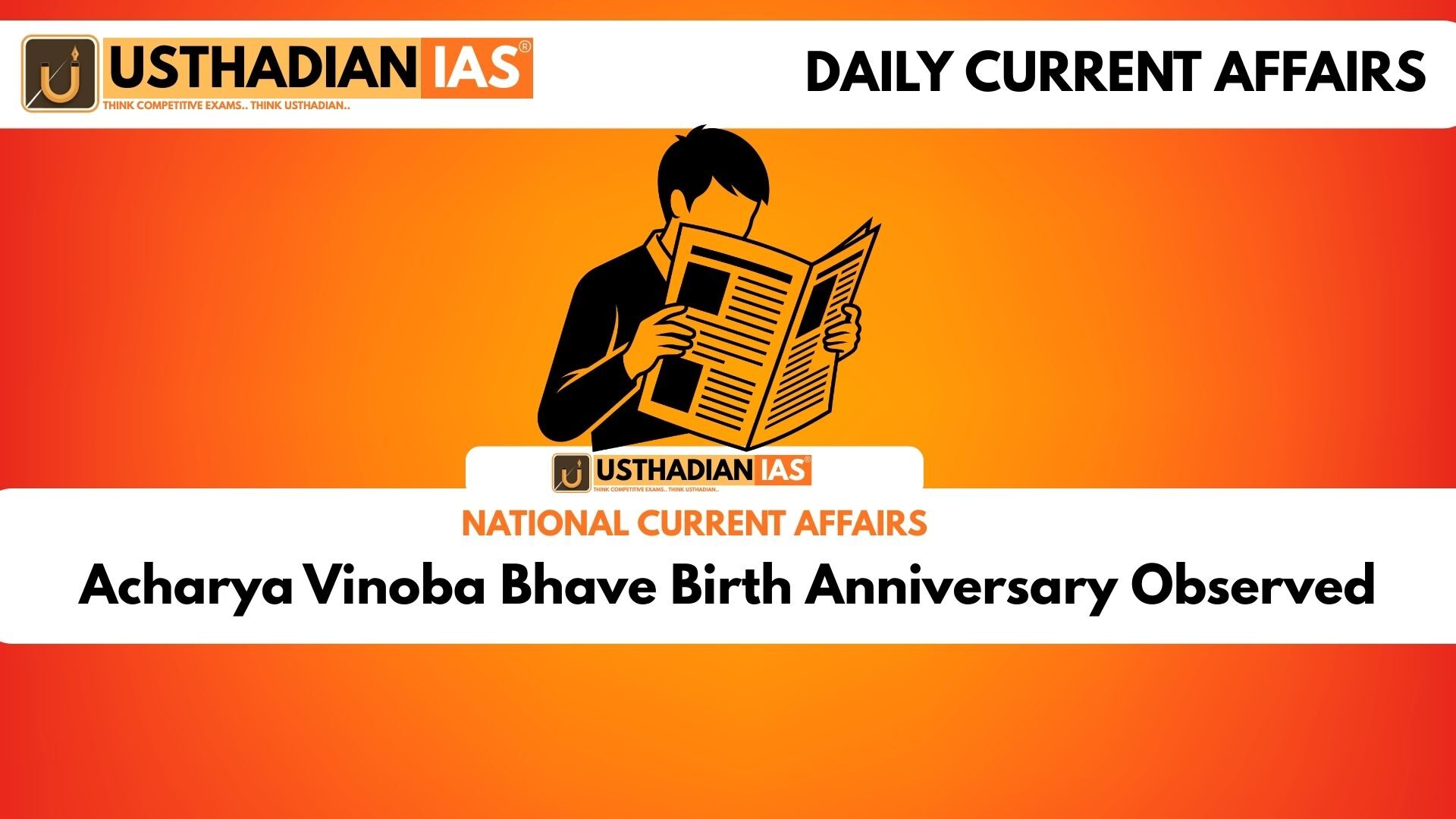Early life and background
Acharya Vinoba Bhave Birth Anniversary Observed: Acharya Vinoba Bhave was born in 1895 in Gagode, a small tribal hamlet in Maharashtra. He grew up with strong moral values, simplicity, and a spiritual inclination. His life reflected the ideals of selflessness, justice, and equity, which later shaped his social and political activities.
Static GK fact: Vinoba Bhave is often remembered as the National Teacher of India for his moral leadership.
Association with Gandhi
Vinoba Bhave became a close disciple of Mahatma Gandhi. At Sabarmati Ashram, he trained students in khadi production, sanitation, and constructive rural development. His dedication earned him the title of spiritual successor of Gandhi.
Static GK Tip: Sabarmati Ashram in Ahmedabad, Gujarat, was the hub of India’s non-violent freedom struggle.
Role in freedom struggle
Vinoba Bhave actively participated in the Quit India Movement (1942). Earlier, he became the first satyagrahi in Gandhi’s Individual Civil Disobedience Movement (1940), where he protested against British colonial policies. His leadership was rooted in non-violence and mass mobilization.
Gram Seva Mandal
To strengthen rural service, Vinoba Bhave founded the Gram Seva Mandal in 1934. The organization promoted rural self-reliance, upliftment of villages, and social reforms through collective participation.
Bhoodan Movement
Vinoba Bhave is best known for the Bhoodan Movement (1951). It was a non-violent initiative where wealthy landowners voluntarily donated land to landless peasants. The movement began at Pochampally in Telangana, when villagers responded to Vinoba’s appeal for land for the poor.
Static GK fact: The Bhoodan Movement is considered the first major Gandhian experiment in peaceful land redistribution after India’s independence.
Literary contributions
Vinoba Bhave was also a prolific writer and thinker. His works include Gitai, Gita Pravachane, Sthitaprajna-Darshan, Gitai Chintanika, Jnanadevanchi Bhajane, Ishavasya-Vrutti, Vichar-Pothi, and Swarajya-Shastra. These writings combined spiritual insights with practical philosophy for social reform.
Values and legacy
Vinoba Bhave stood for austerity, simplicity, equality, and justice. His life symbolized the blending of spirituality with social change. Even after his passing in 1982, his philosophy continues to inspire movements focused on sustainable living, rural welfare, and non-violent reform.
Static GK Tip: Acharya Vinoba Bhave received the Ramon Magsaysay Award for Community Leadership in 1958 and the Bharat Ratna in 1983 (posthumously).
Static Usthadian Current Affairs Table
Acharya Vinoba Bhave Birth Anniversary Observed:
| Topic | Detail |
| Birth | 1895 at Gagode, Maharashtra |
| Title | National Teacher of India |
| Gandhi link | Spiritual successor of Mahatma Gandhi |
| First satyagrahi | Individual Civil Disobedience, 1940 |
| Quit India role | Active participant in 1942 movement |
| Gram Seva Mandal | Founded in 1934 for rural service |
| Bhoodan Movement | Started in 1951 at Pochampally, Telangana |
| Key works | Gitai, Swarajya-Shastra, Sthitaprajna-Darshan |
| Awards | Ramon Magsaysay Award 1958, Bharat Ratna 1983 |
| Death | 1982 |








